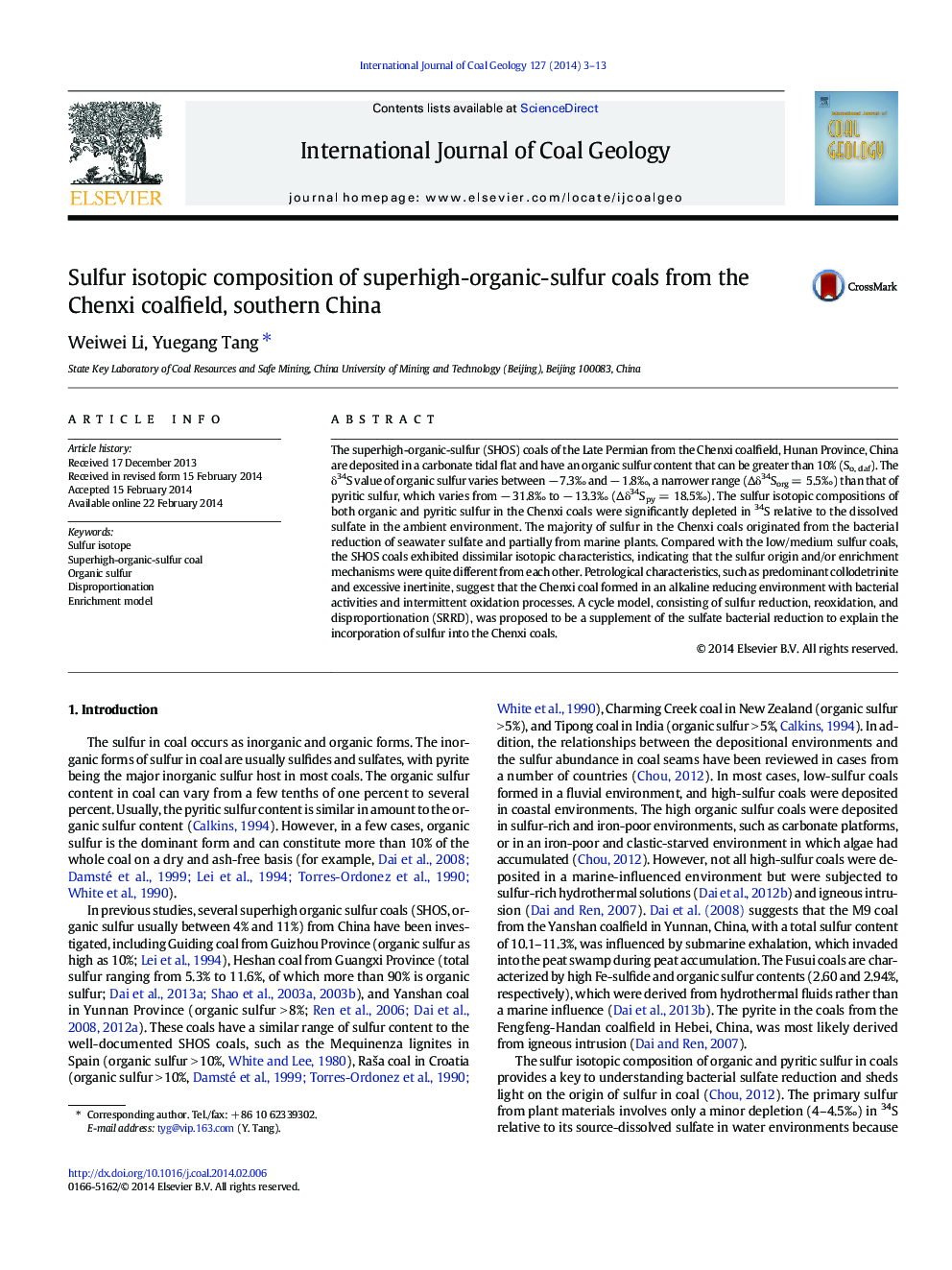| Article ID | Journal | Published Year | Pages | File Type |
|---|---|---|---|---|
| 1753146 | International Journal of Coal Geology | 2014 | 11 Pages |
Abstract
The superhigh-organic-sulfur (SHOS) coals of the Late Permian from the Chenxi coalfield, Hunan Province, China are deposited in a carbonate tidal flat and have an organic sulfur content that can be greater than 10% (So, daf). The δ34S value of organic sulfur varies between â 7.3â° and â 1.8â°, a narrower range (Îδ34Sorg = 5.5â°) than that of pyritic sulfur, which varies from â 31.8â° to â 13.3â° (Îδ34Spy = 18.5â°). The sulfur isotopic compositions of both organic and pyritic sulfur in the Chenxi coals were significantly depleted in 34S relative to the dissolved sulfate in the ambient environment. The majority of sulfur in the Chenxi coals originated from the bacterial reduction of seawater sulfate and partially from marine plants. Compared with the low/medium sulfur coals, the SHOS coals exhibited dissimilar isotopic characteristics, indicating that the sulfur origin and/or enrichment mechanisms were quite different from each other. Petrological characteristics, such as predominant collodetrinite and excessive inertinite, suggest that the Chenxi coal formed in an alkaline reducing environment with bacterial activities and intermittent oxidation processes. A cycle model, consisting of sulfur reduction, reoxidation, and disproportionation (SRRD), was proposed to be a supplement of the sulfate bacterial reduction to explain the incorporation of sulfur into the Chenxi coals.
Related Topics
Physical Sciences and Engineering
Earth and Planetary Sciences
Economic Geology
Authors
Weiwei Li, Yuegang Tang,
